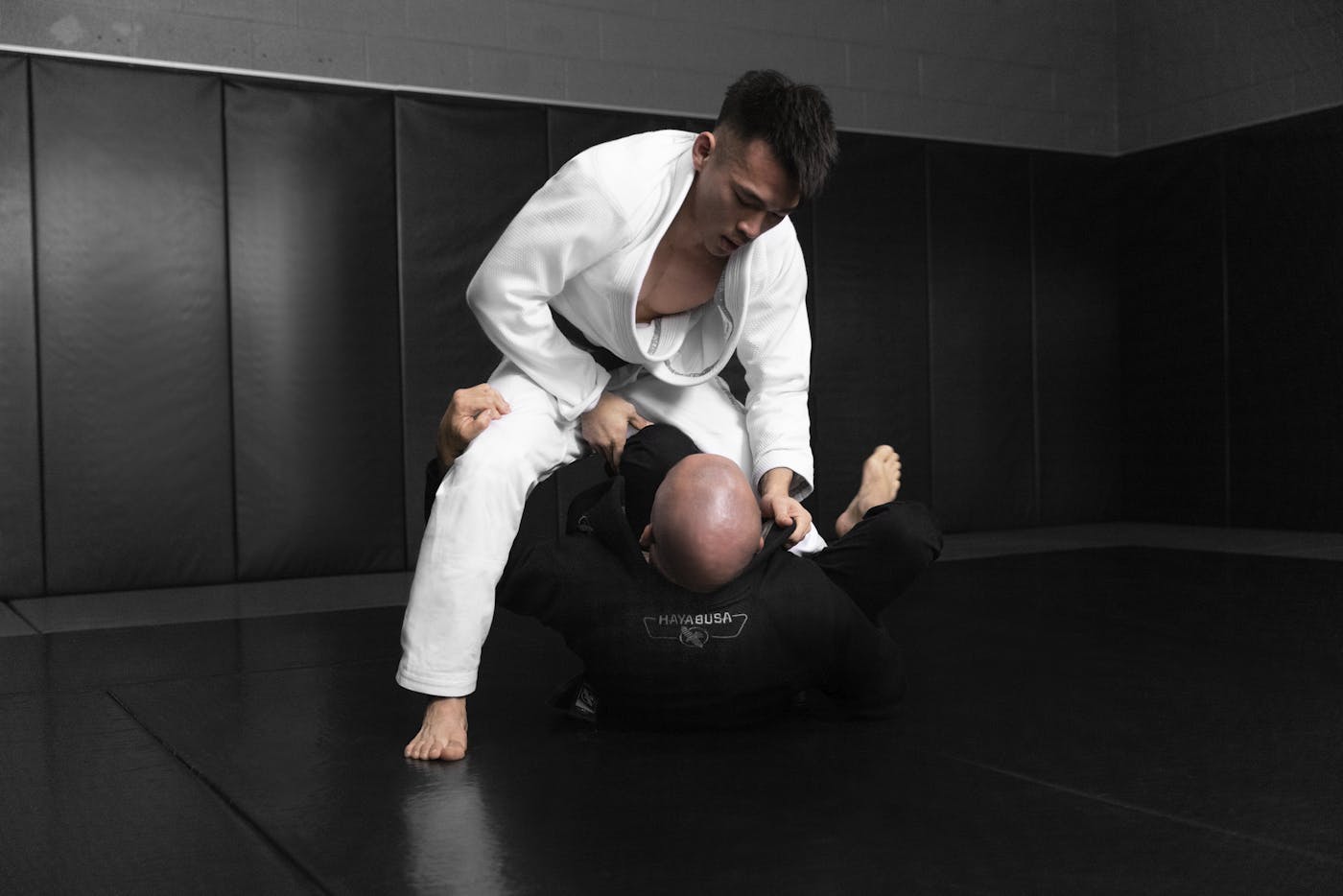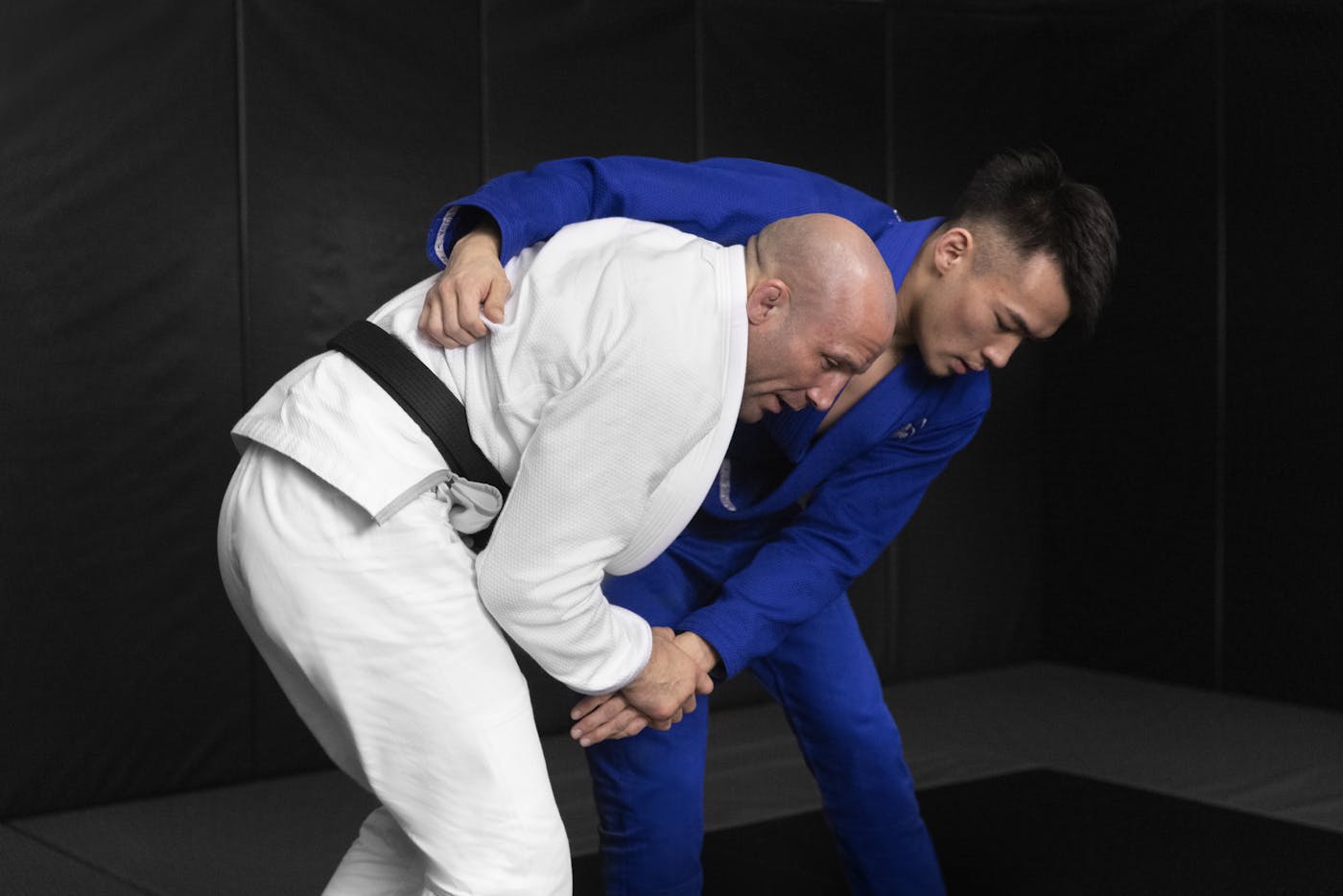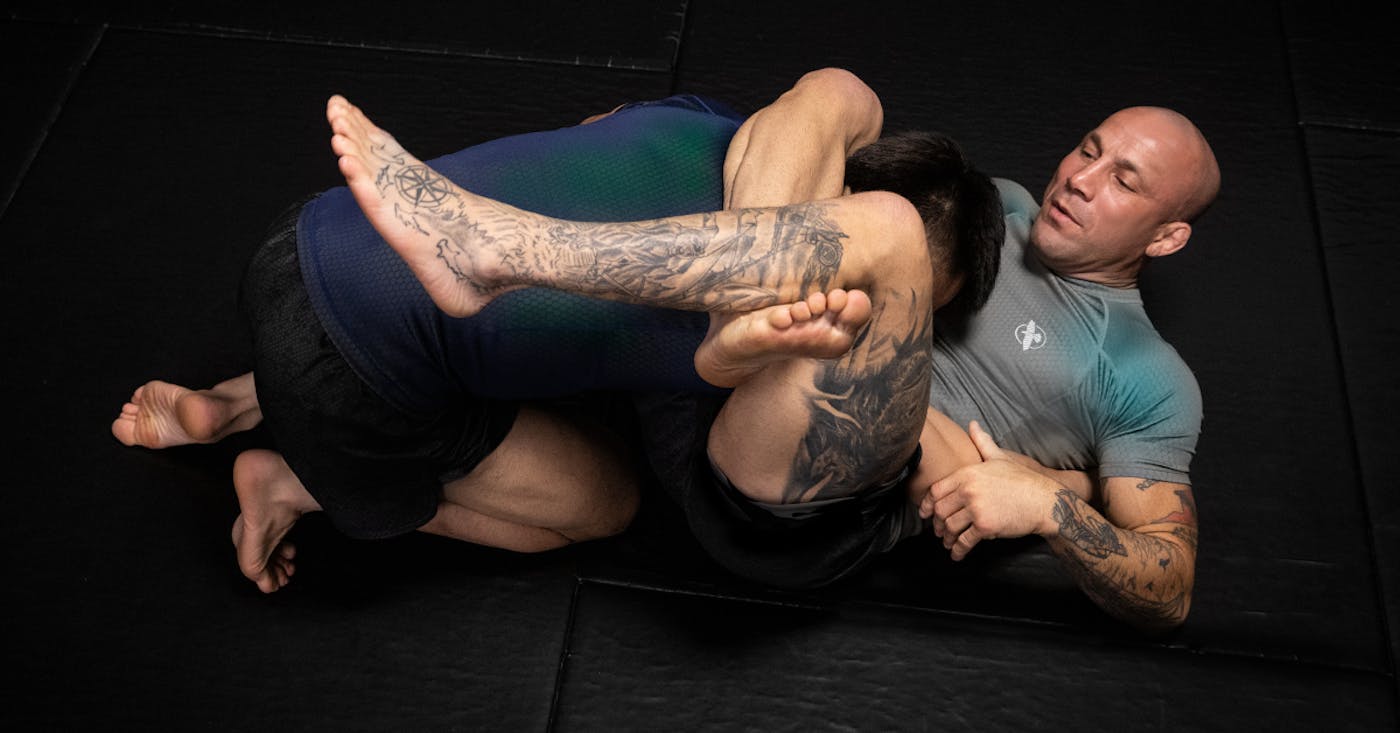Martial arts have a rich history, each with its own appeal and purpose. Often, techniques from different disciplines crossover and create an individual’s fight style.
When comparing Brazilian jiu-jitsu vs. jiu-jitsu, we’ll explore how they’re different, areas they’re the same, and the proper fight apparel necessary for both.
The Origins of BJJ and Jiu Jitsu
So, what is BJJ, and what elements differentiate it from JJJ?
Brazilian jiu-jitsu (BJJ) is commonly practiced in the fight community with origins beginning in the 1920s. As a grounds-based martial art, it involves full-body combat which tests a person’s skills, techniques, and stamina.
Alternatively, the lesser-referenced Japanese jiu-jitsu (JJJ) has historical roots that go back more than 2000 years. Often referred to as “jujutsu,” this type of combat was invented for Japanese soldiers (samurai) to defend themselves against enemies sans weapons.
Though jujutsu translates to the “art of softness” in Japanese, the striking and grappling techniques are more aggressive than BJJ. For instance, chokes and joint locks are applied with excessive force.
Perhaps, because of this, the expansion of BJJ became more widely accepted, though there are still elements of Japanese jiu-jitsu practiced today.

What Makes BJJ Different Than JJJ?
Strikes and grappling are common in both BJJ and JJJ, but there are specific differences between the two martial arts. These include fight style, skills and techniques, and rules of competition.
Fight Style
The biggest difference is the origin of jiu-jitsu. JJJ was initially intended as self-defense maneuvers to defeat military opponents. In Japanese training, students still often use wooden weapons for sparring as they learn offensive and defensive techniques.
The goal of JJJ is to disarm and neutralize the opponent when in battle. Whereas, BJJ takes on more of a self-defense stance.
Fighters training in Brazilian jiu-jitsu also learn defensive techniques but in a way that minimizes severe harm to the opponent. No weapons are used so disarming techniques aren’t necessary.
The general spirit of BJJ vs. jiu-jitsu the Japanese learned is to avoid fighting whenever necessary and only implement skills in self-defense.

Skills and Techniques
Since JJJ is more aggressive and designed as much to disarm an opponent as it is to self-defend, there are quite a few more techniques to learn. In addition to strikes and holds, there are also joint locks, placing chokes, and takedowns.
Though these can also be used in BJJ, the goal in Brazilian jiu-jitsu is to get the opponent to the ground without causing harm. From there, it makes it safer to defend against strikes with grappling used as the go-to technique to subdue an opponent.
While both types of martial arts could be used interchangeably, it depends on training style and competition rules.
Competition Rules
Every competition has its own fight rules which must be followed to avoid disqualification. BJJ gi and no-gi competitions aren’t typically as aggressive as traditional jiu-jitsu fights.
Moves like spinal locks, scissor takedowns, and knee twisting are all considered illegal moves in BJJ per the IBJJF’s rules. It’s important to review any rules before competing to know whether the moves practiced can be used during competition.
Due to the aggressiveness of Japanese jiu-jitsu, there aren’t many competitions available for this type of martial art because it’s focused more on individual preservation versus athleticism.
Hayabusa Essential Gold Weave Jiu-Jitsu Gi

Hayabusa Warrior Gold Weave Jiu Jitsu Gi

Hayabusa Jiu Jitsu Belt

Hayabusa Fusion Short Sleeve Rash Guard

What to Wear for BJJ Competition
When competing, there are specific uniforms fighters are required to wear. Fighters can choose from lightweight or heavyweight gis depending on what’s preferable and necessary per the fight rules.
A jiu-jitsu gi involves a full kimono-style jacket and pants to protect the body when grappling on the mat. The entire Hayabusa Jiu-Jitsu Gi Collection is available in IBJJF-compliant colors and is ideal for both BJJ training and competition.
Each BJJ gi is constructed with reinforced lapels, knees, and high-stress areas to prevent tearing and thinning of the material. Though highly durable, the jiu-jitsu gi is also soft and comfortable to support moveability and high performance.
Essential Gold Weave Jiu-Jitsu Gi
The latest addition to the Hayabusa Jiu-Jitsu Gi Collection is made with exclusive gold weave fabric and twill ripstop pants for extra durability and comfort. With a streamlined design, the Essential Gold Weave Jiu-Jitsu Gi is competition-ready with a performance-driven fit that is both soft and sturdy.
This heavyweight gi is available in IBJJF-compliant colors and multiple sizes to get fighters ready for competition and look the part of a champion. Refer to the Hayabusa jiu-jitsu gi size chart to secure your ideal fit.

In no-gi BJJ or MMA competitions, fighters often opt for rash guards. These compression shirts protect against mat burns and offer form-fitting stretch to easily move with the body.
The close fit of Hayabusa Rash Guards prevents an opponent’s ability to grab onto the fabric and keeps you agile on the mat. Meanwhile, flatlock stitching promises unmatched durability with a soft touch and color-shifting effect to fight with confidence.

BJJ belts are identified by different colors and are a key part of the uniform. As a fighter moves up in ranking, they are promoted to a new belt.
The jiu-jitsu belt ranking system is reflected in other martial arts as well like karate and judo as fighters advance to the next level. There’s a progression from white, blue, purple, and brown before finally reaching the black belt.
Hayabusa BJJ Belts are constructed with the highest quality fabric and designed with a signature eye-catching patch featuring the iconic peregrine falcon symbol Hayabusa is known for.
When comparing Brazilian jiu-jitsu vs. jiu-jitsu for Japanese belt ranks, there are more colors and levels, with yellow, orange, and green added to the BJJ progression. Fighters of Japanese jiu-jitsu are also required to go through a formal grading process to receive a belt promotion.
Whereas, BJJ practitioners are promoted based on many factors, including sparring levels and time spent training. Typically, the change from one belt color to another is at the discretion of the instructor and what they use to evaluate the promotion.

Tying a Jiu-Jitsu Belt
In addition to identifying rank, the BJJ belt keeps the uniform in place as you grapple and move around the mat. If it comes loose in competition, you only have 20 seconds to retie the belt, which means it should be secure but without restricting movement.
There are several knot styles to choose from, but it ultimately comes down to preference when learning how to properly tie a belt for training and competition.
Which Martial Art Should I Train In?
There are many similarities between BJJ and JJJ and training with both techniques can be valuable for any fighter.
There is strength, endurance, and discipline attached to both types of martial arts so learning both can intensify and elevate training. However, be mindful of the purpose and skills used for each and when they can and can’t be used.
Know that you may have to restrain yourself from certain Japanese jiu-jitsu movements during competition which means you’ll have to be strategic whenever you hit the mat.
In the meantime, embrace the fighting spirit of how both types of jiu-jitsu began, and turn to Hayabusa for all your BJJ gear, equipment, and apparel.



